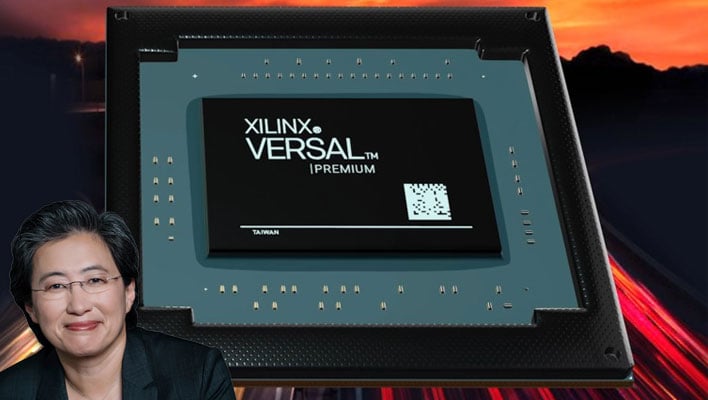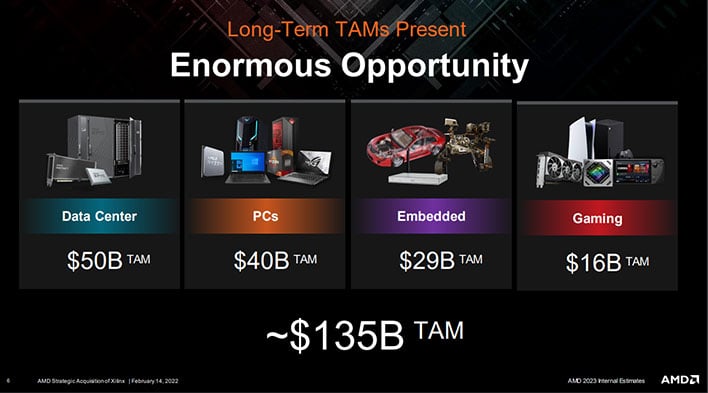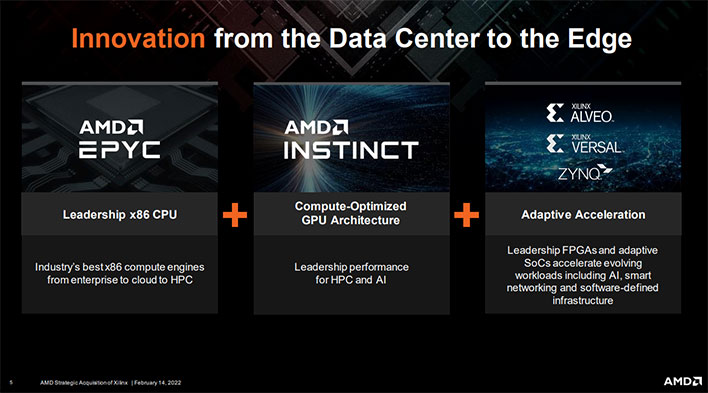AMD Completes Xilinx Acquisition And Details Huge Market Expansion Opportunity

AMD has completed its acquisition of Xilinx, a heavy-hitter in field programmable gate array (FPGA) designs, in an all-stock transaction valued at $35 billion. Announced in October 2020, the deal took a little bit longer than AMD anticipated, with the company originally anticipating a December 2021 closing. But now that it's officially a done deal, it qualifies as the largest acquisition in semiconductor history.
As you might imagine, AMD has big plans its newly acquired Xilinx business, which will become the Adaptive and Embedded Computing Group (AECG), though the company says it is not making any short-term or even long-term changes to its existing roadmap on day one. So what's the play here? Looking further down the line, AMD envisions leveraging the expanded R&D of the acquisition to extend its reach into more markets and eventually strengthen its long-term product roadmaps.
"The acquisition of Xilinx brings together a highly complementary set of products, customers and markets combined with differentiated IP and world-class talent to create the industry’s high-performance and adaptive computing leader," said AMD President and CEO Dr. Lisa Su. "Xilinx offers industry-leading FPGAs, adaptive SoCs, AI engines and software expertise that enable AMD to offer the strongest portfolio of high-performance and adaptive computing solutions in the industry and capture a larger share of the approximately $135 billion market opportunity we see across cloud, edge and intelligent devices."
This is a complementary move, in other words, albeit one with enormous market potential. FPGA chips differ from standard computer processors that consumers are most familiar with by having the ability to be reprogrammed after manufacturing to address a client's specific needs. This will allow AMD to offer differentiated solutions for cloud, edge, and intelligent end devices, now that's cleared all regulatory hurdles.
The acquisition also paves a path for AMD to develop some unique products that perhaps are not on anyone's radar just yet. The company notes that while CPUs and GPUs will continue to drive high-performance computing, algorithms are always advancing and new standards continually emerging.
"The rapid expansion of connected devices and data-intensive applications with embedded AI are driving the growing demand for highly efficient and adaptive high-performance computing solutions," said Victor Peng, the former Xilinx CEO who will lead AECG. "Bringing AMD and Xilinx together will accelerate our ability to define this new era of computing by providing the most comprehensive portfolio of adaptive computing platforms capable of powering a wide range of intelligent applications."
Xilinx brings with it deep strategic partnerships across wired and wireless communications, automotive, industrial and test, aerospace and defense, broadcast, measurement and emulation, and consumer markets. AMD says the acquisition will increase its TAM (total addressable market) from $80 billion to $135 billion by next year. The benefits of the buyout to AMD are numerous and include strengthening its financial model through expanded market opportunities, and adding to the company's technical capabilities from the influx of talent and IP.
AMD's closing of the Xilinx deal comes on the heels of NVIDIA calling off its Arm acquisition due to regulatory challenges, which otherwise would have qualified for the biggest chip deal in history.



